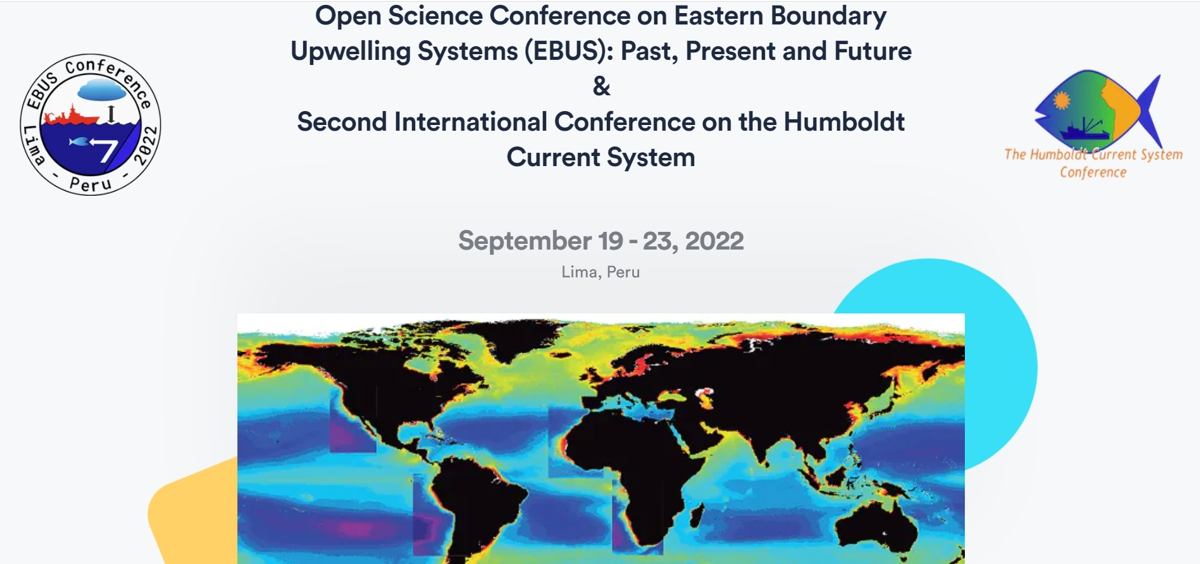There are four main EBUS in the world and they are of vital importance for the world's fisheries. Probably the most (in)famous global climate phenomenon takes place in the Peruvian / Chilean EBUS and usually around Christmas time, leading to the name "El Niño". This phenomenon is related to an atmospheric and oceanic re-arrangements of air flow and ocean currents with catastrophic meteorological and climatic effects on both East and West sides of the South Pacific Ocean.
During an El Niño event, the coastal upwelling diminishes drastically, leading to strongly reduced amounts of nutrients that are brought to the surface ocean, with catastrophic effects on the primary productivity in these waters. In addition, the large swings in both air temperature and water temperature lead to large changes in atmospheric circulation and precipitation both in South America as well as in countries on the western side of the Pacific Ocean such as New Zealand, Australia and Indonesia.
Many scientific disciplines including physics (ocean and atmosphere), biology (fisheries, phytoplankton studies) climatology and social sciences put huge efforts in understanding these EBUS. However, so far, very little attention has been paid to the role of desert dust on the oceanic carbon pump in these systems, although it is well known that large amounts of mineral dust are blowing into the southern East Pacific:
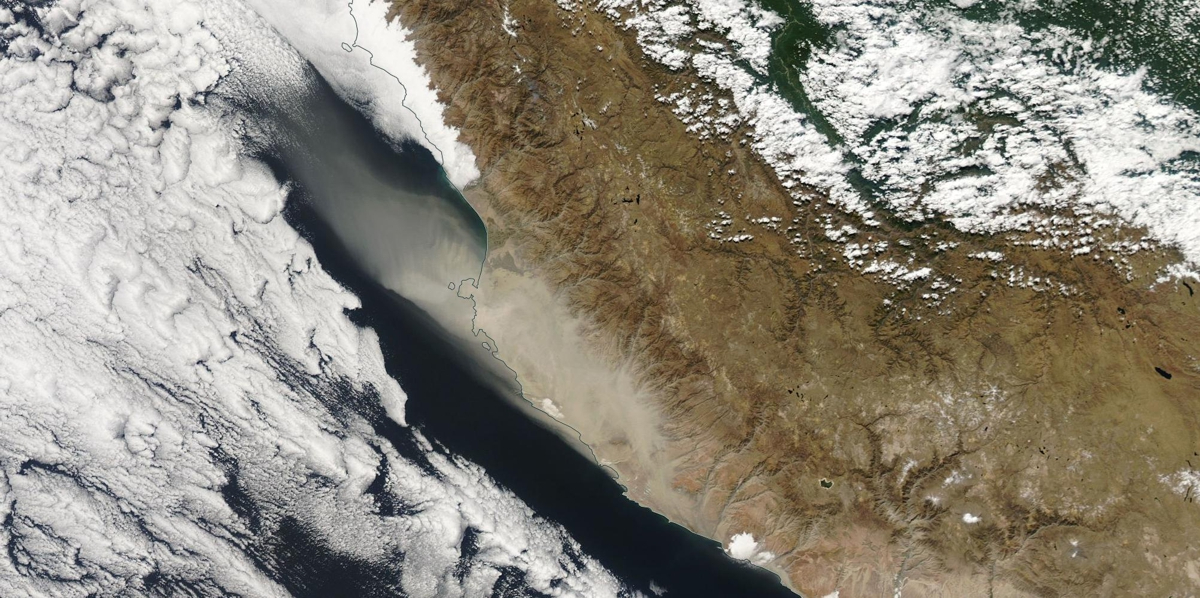
To draw attention to the role of desert dust in EBUS Catarina Guerreiro (MARE, Lisbon, Portugal) and Jan-Berend Stuut (NIOZ/VU) hosted a session during the meeting, which was attended both 'live' and virtually by many participants around the world.
After the meeting, Catarina and Jan-Berend travelled a few days through Peru to visit and sample two major deserts, which are known to emit dust into the Pacific Ocean.
Below this line you can follow us on our trip through Peru with the most recent contributions at the top:
29 September: detailed view of the sand dunes
When looking into a tick more detail at the sand dunes, one sees that the wind that shapes the dunes also causes ripples. The colours that can be seen are partly due to shadow of the ripples and partly caused by dark-coloured particles on yellowish quartz particles.
Here you can also see that the seemingly razor-sharp edge is not so sharp after all.
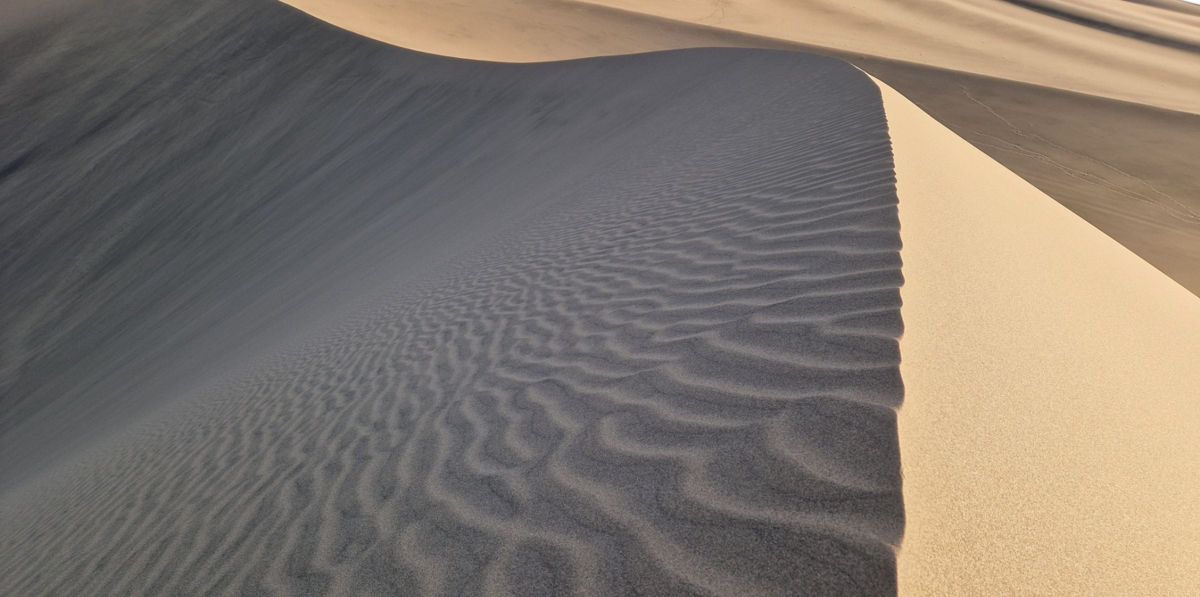
In even more detail, one can see that the ripples are not symmetric; they have a short and steeper lee (upwind) side and a longer and flatter luff (downwind) side. This information can be used to reconstruct prevalent wind directions when such wind ripples are found fossil. The same observation can be made in flowing water, which also causes asymmetric ripples as opposed to wave-related ripples, which are symmetric. Thé difference between wind-related (aeolian) ripples and water-related ripples is the sorting; aeolian ripples have slightly coarser-grained crests (finer-grained particles are blown out) as opposed to slightly finer-grained troughs. Current-related ripples show an opposite sorting.
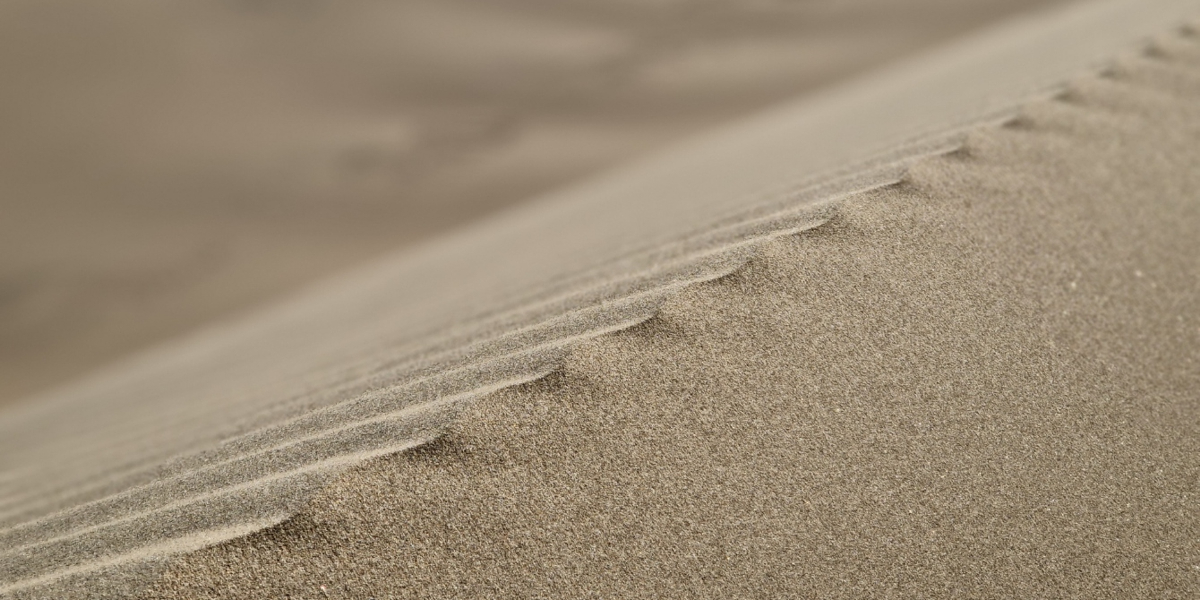
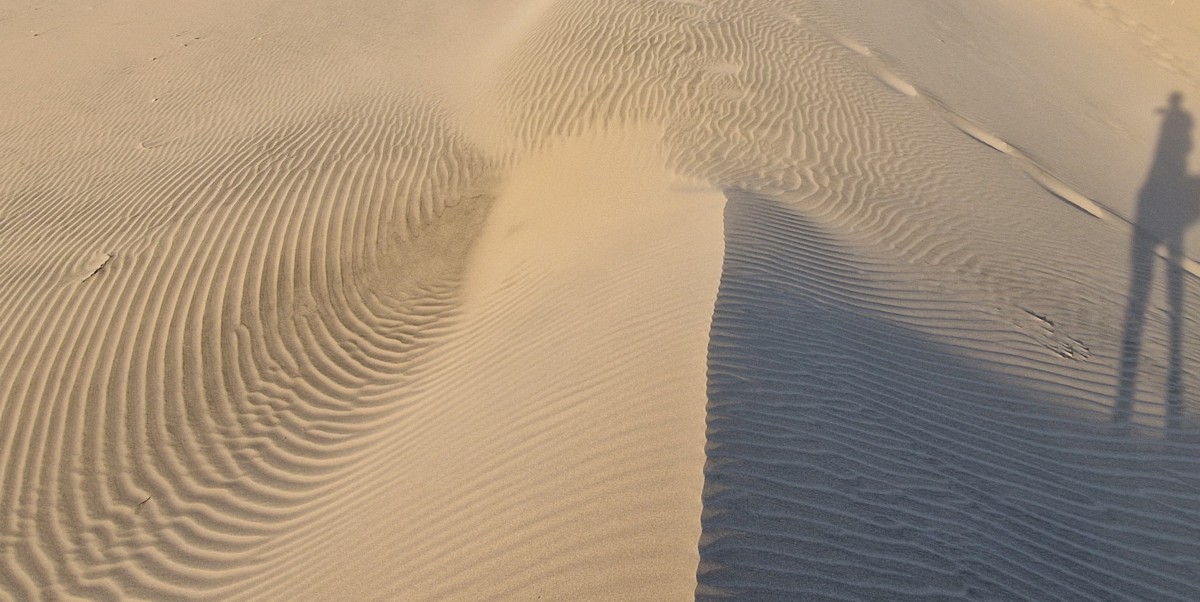
On the dunes the wind patterns may vary strongly, depending on the direction that the wind is pushed by the dunes. However, eating a sandwich on a dune crest will damage your teeth as there are always particles blowing around. Here you see me sampling such aeolian transport, which will be studied for particle size. We hope to be able to reconstruct wind patterns (direction and strength) in the past from wind deposits and these little experiments hopefully help us understand the aeolian processes influencing wind-blown sediment transport.
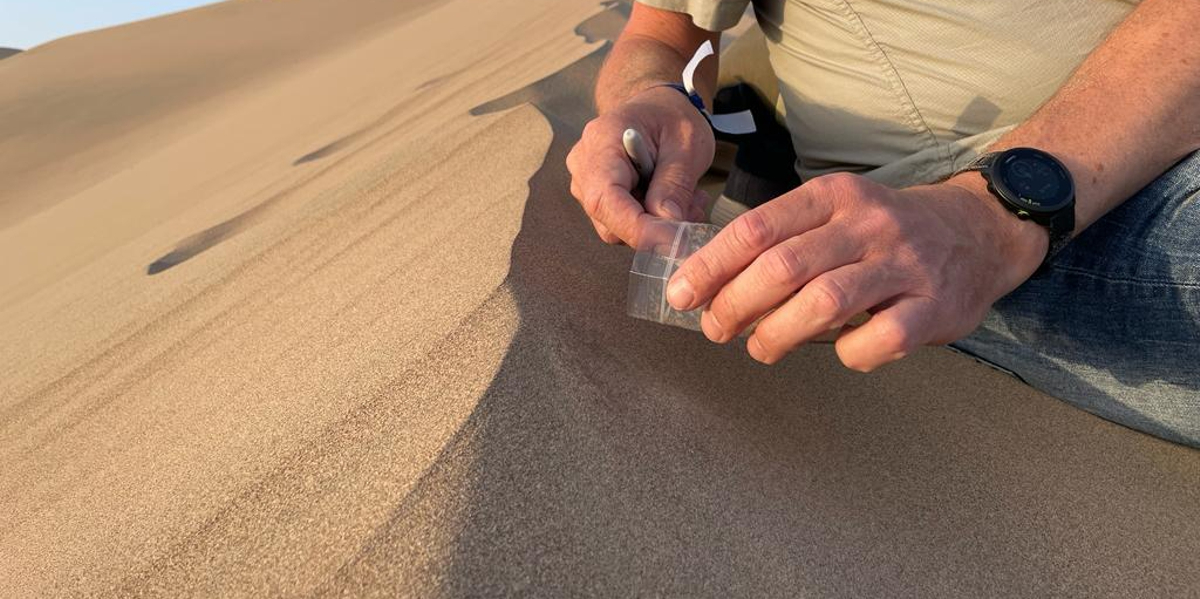
28 September: Oasis Huacachina
Legend has it that this oasis was caused by the tears of a weeping woman. Reality has it that with ongoing climate change the ancient source of water is drying up....
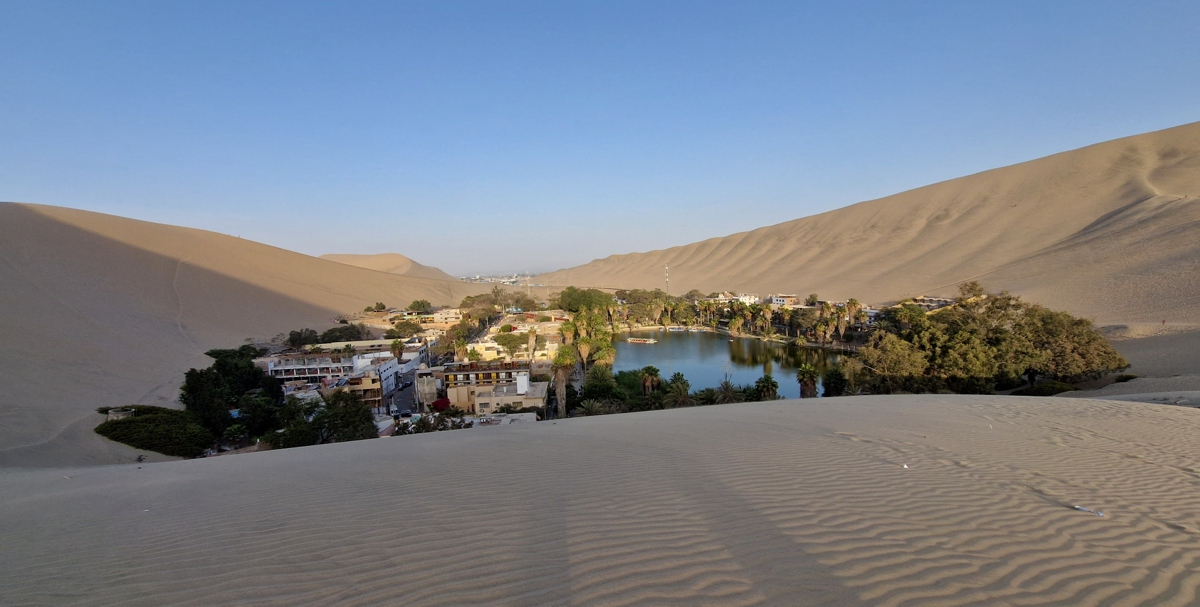
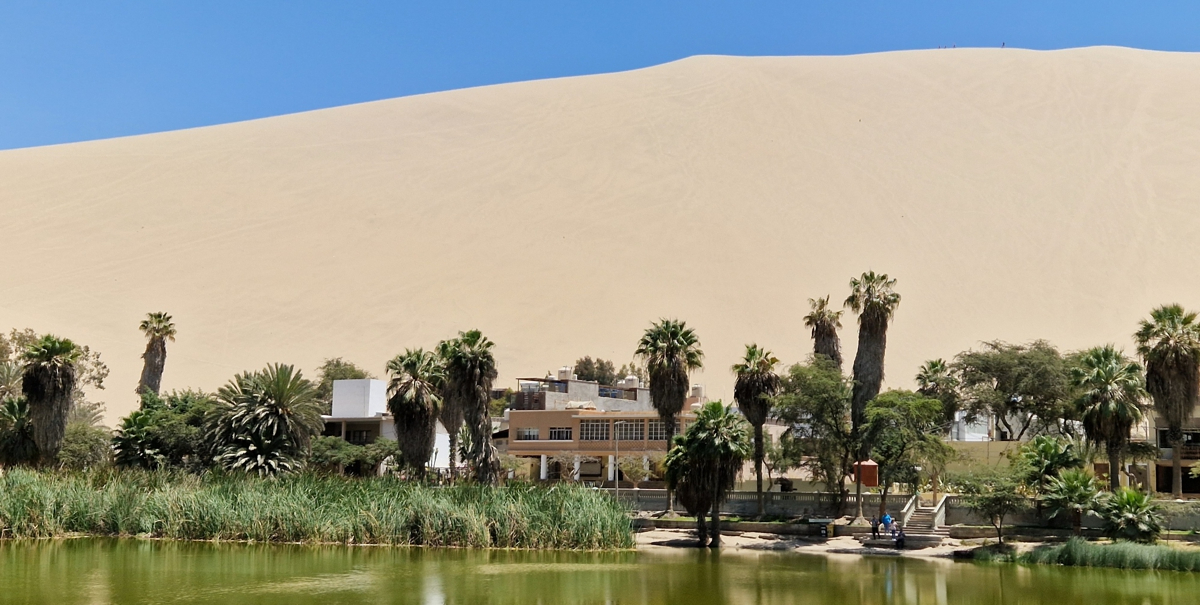
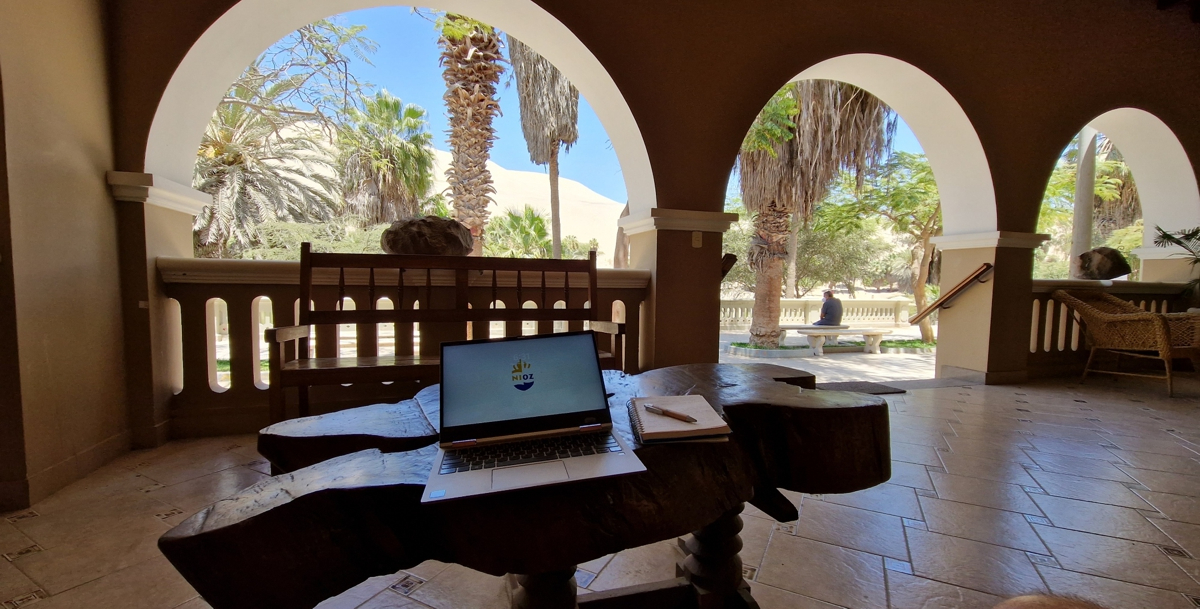
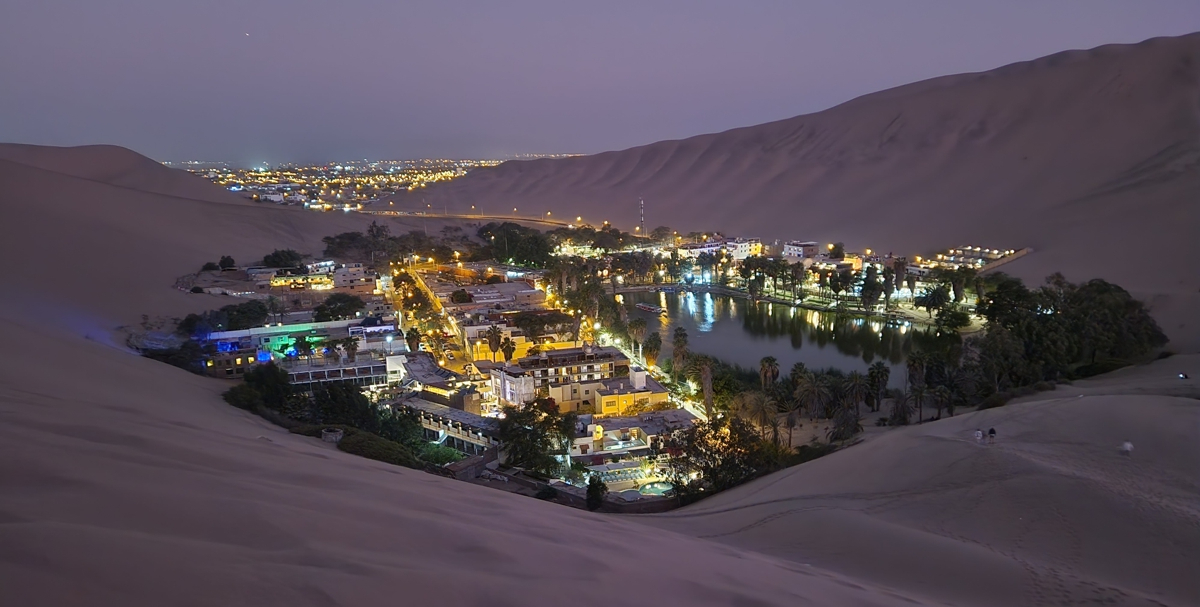
27 September: into the sand dunes
Some 60km southeast of Paracas we do find a scenery which people typically relate to a desert: enormous --up to 500m high!-- sand dunes, completely surrounding the oasis of Huacachina.
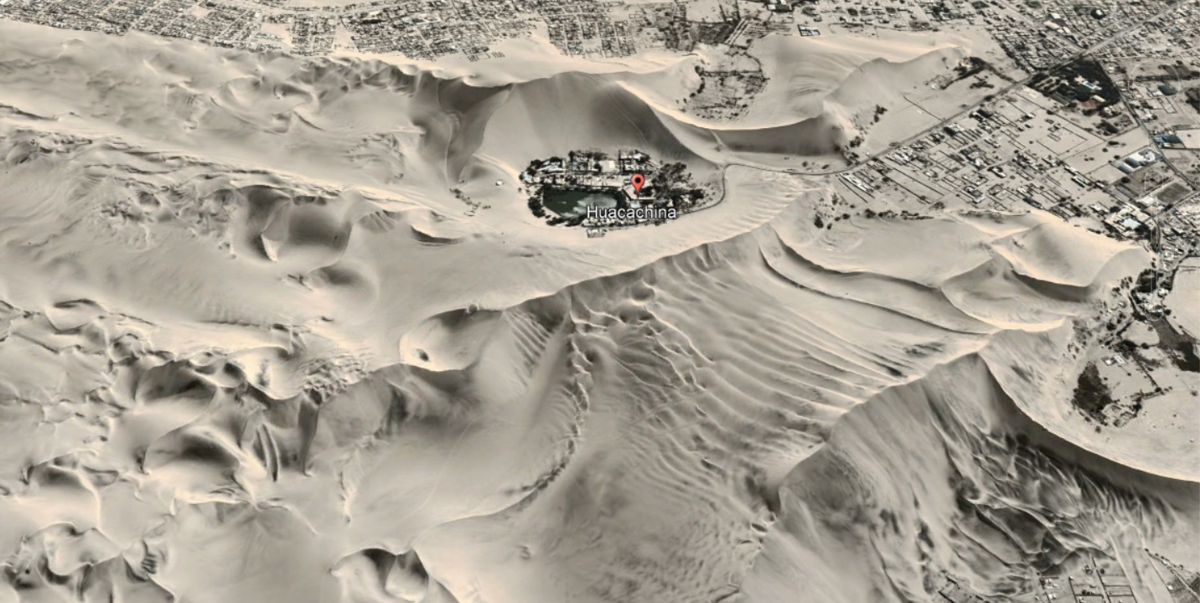
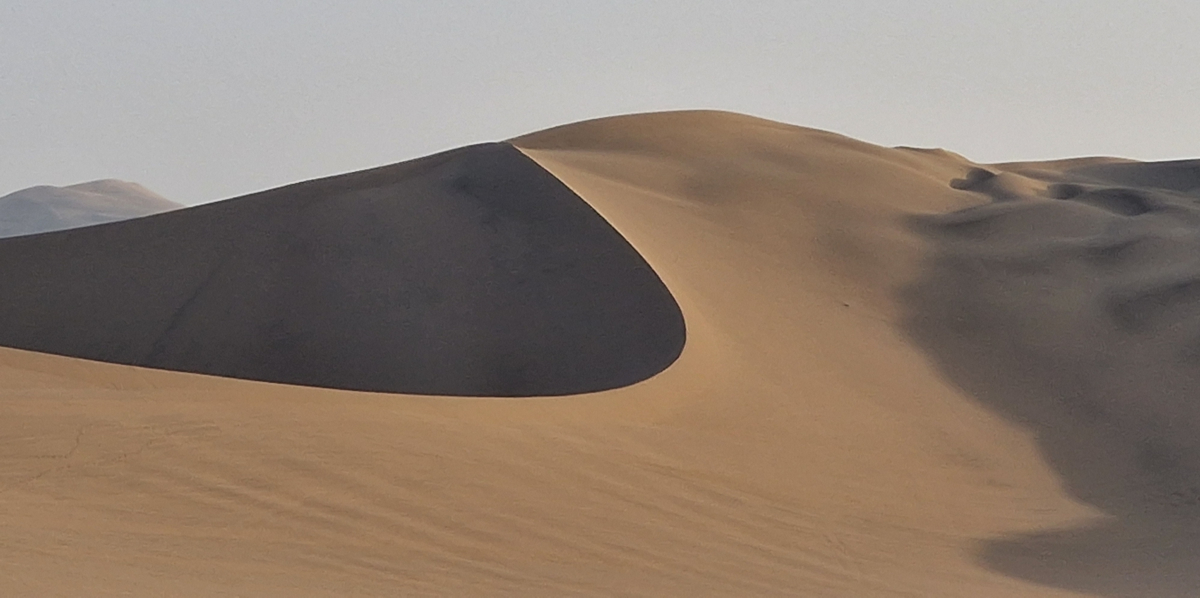
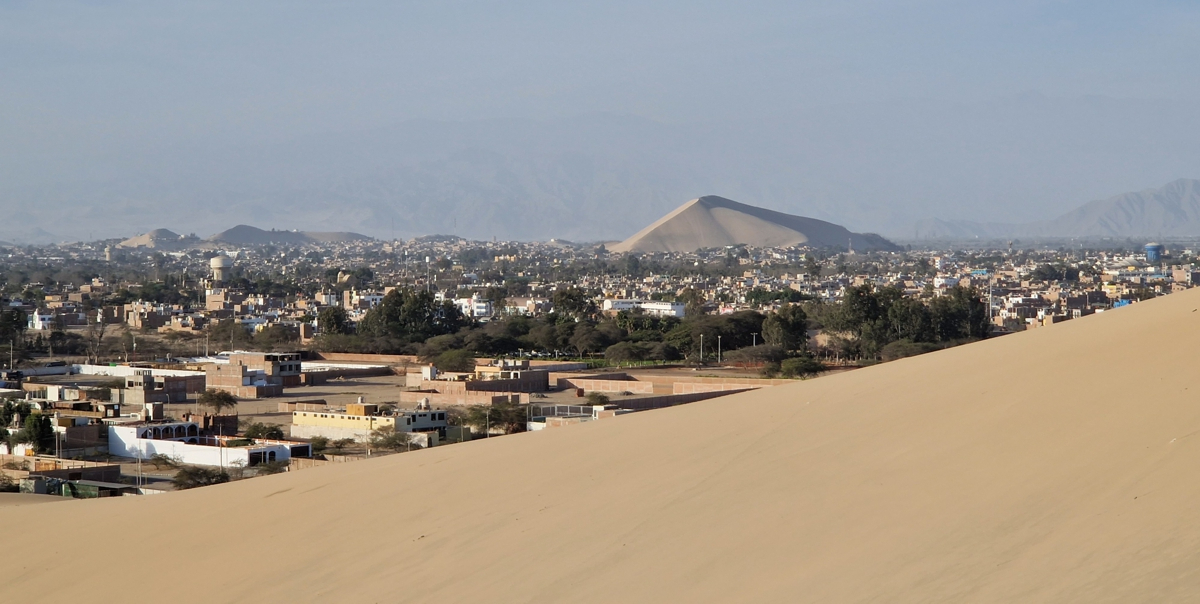
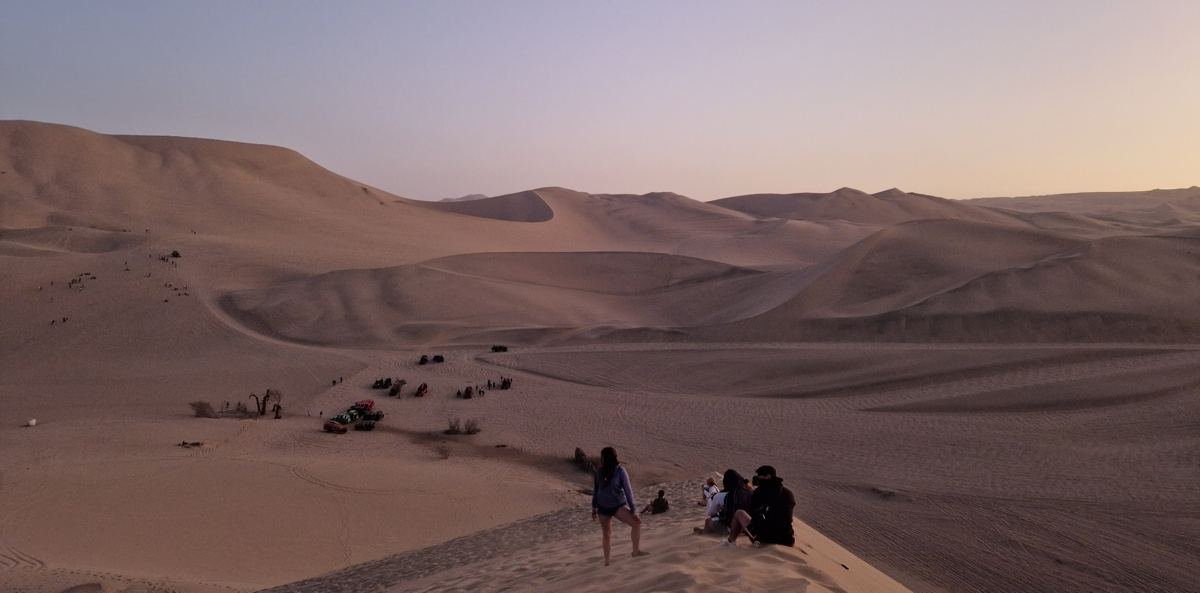
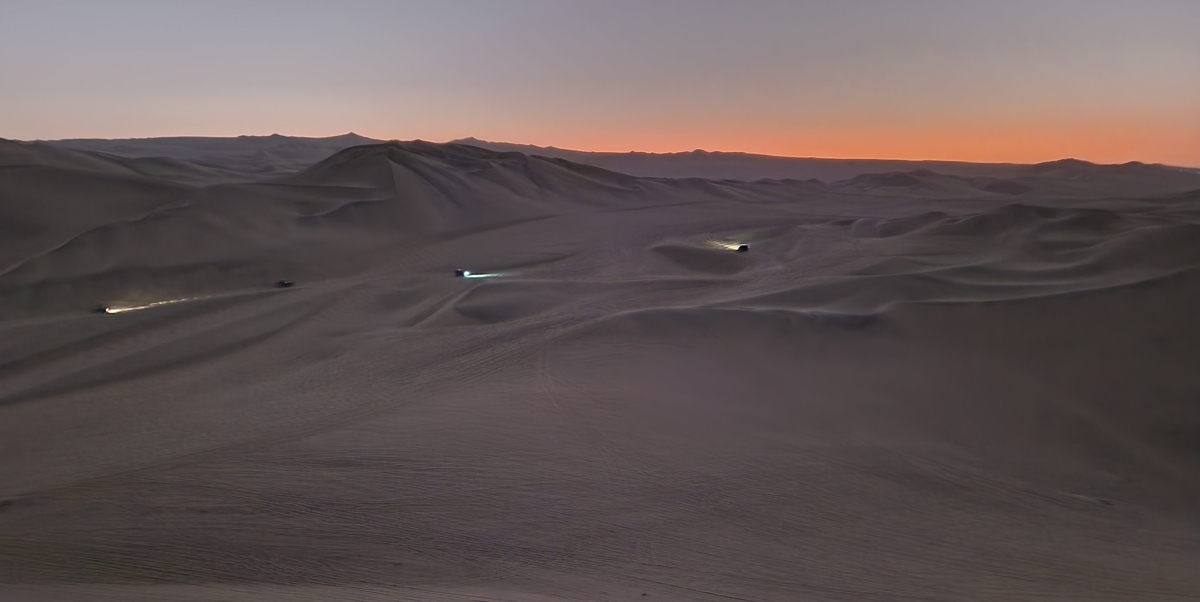
26 September: the Paracas Desert
Although not as clear as yesterday, we sense some dust in the air above the desert south of Paracas. Strangely, this desert does not have a name. Instead of large amounts of sand --as one typically imagines in a desert-- this one is a so-called stony desert with pebbles covering the underlying fine material. Mixed in with the orange-brown sediments are large amounts of salt, caused by evaporation.
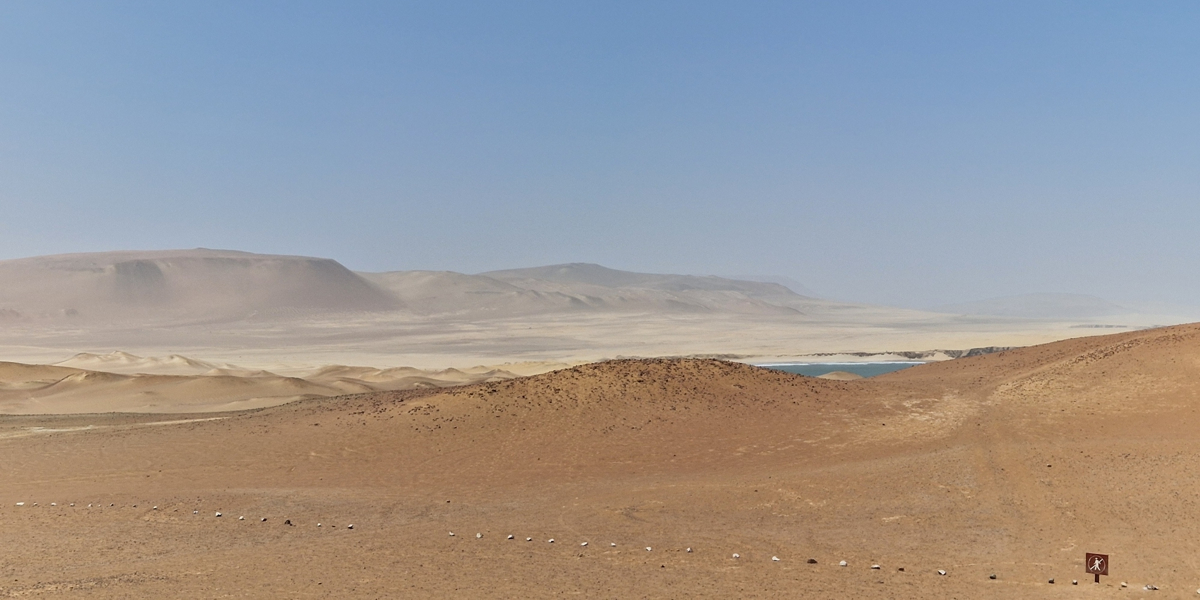
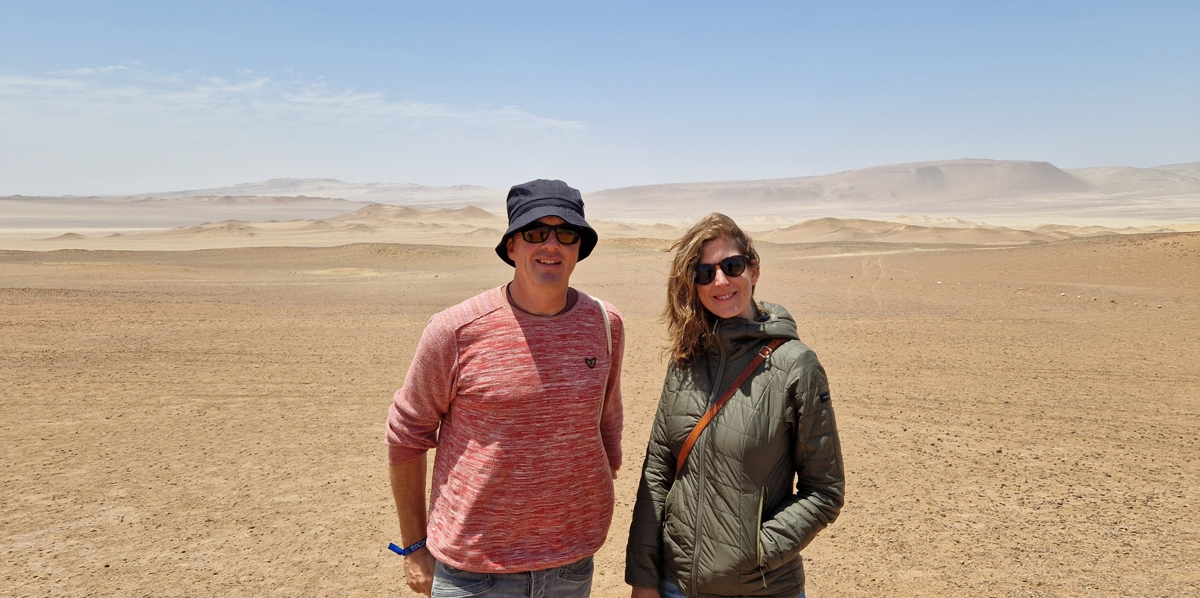
The sun makes sure that the upwelling-related fog disappears quite fast after sunrise, leading to blue skies. With the natural colours of both desert and ocean, enhanced by the white foam that is kicked out of the waves by the strong breeze, this makes quite a colourful display! The high primary productivity in the ocean leads to many birds, which are unfortunately not so easy to catch on camera. We do still question ourselves if this high primary productivity is really only related to upwelling of nutrient-rich waters or that the input of desert dust may play a role as well....
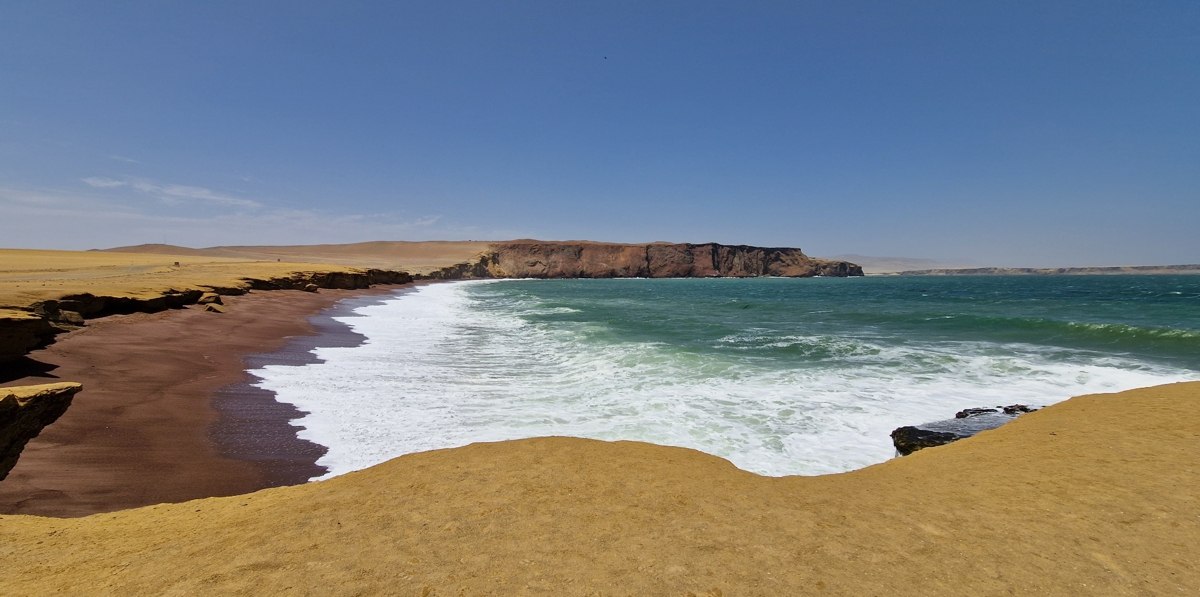
25 September: visiting Paracas
Some 250km south of Lima lies the fishing town Paracas, enclosed between the desert and the ocean. As a result of the upwelling of nutrient-rich deep waters (EBUS!), there is a lot of fish to be caught here.
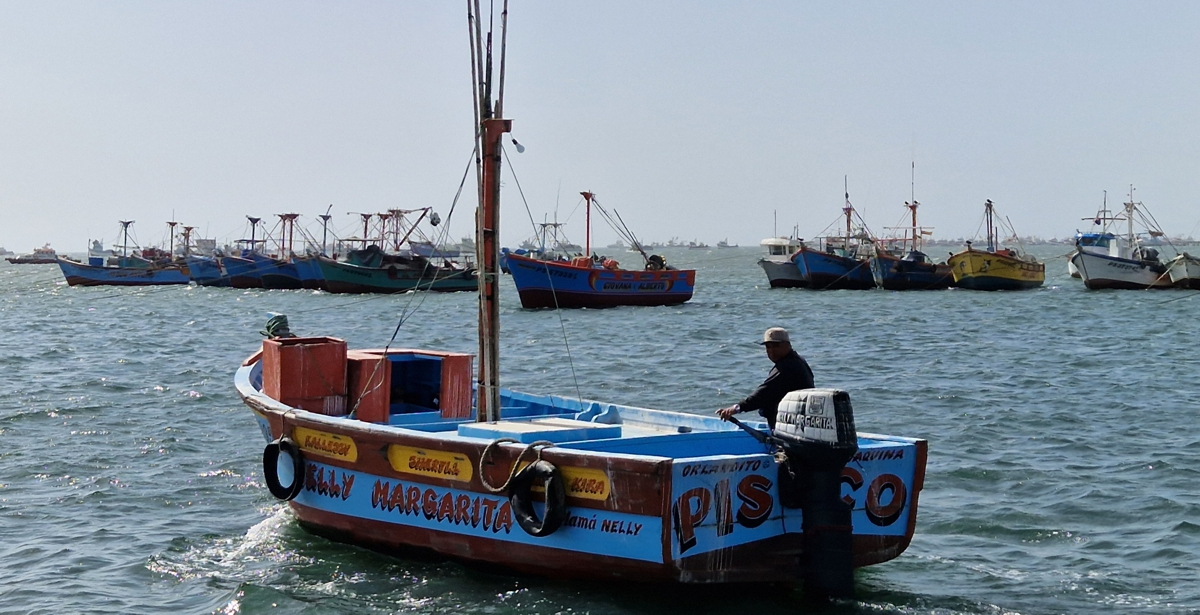
As the sun sets, the skies turn more and more orange; dust is in the air! We are fairly certain that here the obscuration of sunlight is caused by dust as there is no smog here. There could be fog, related to the upwelling of cold water but that would not cause such a distinct orange colour.
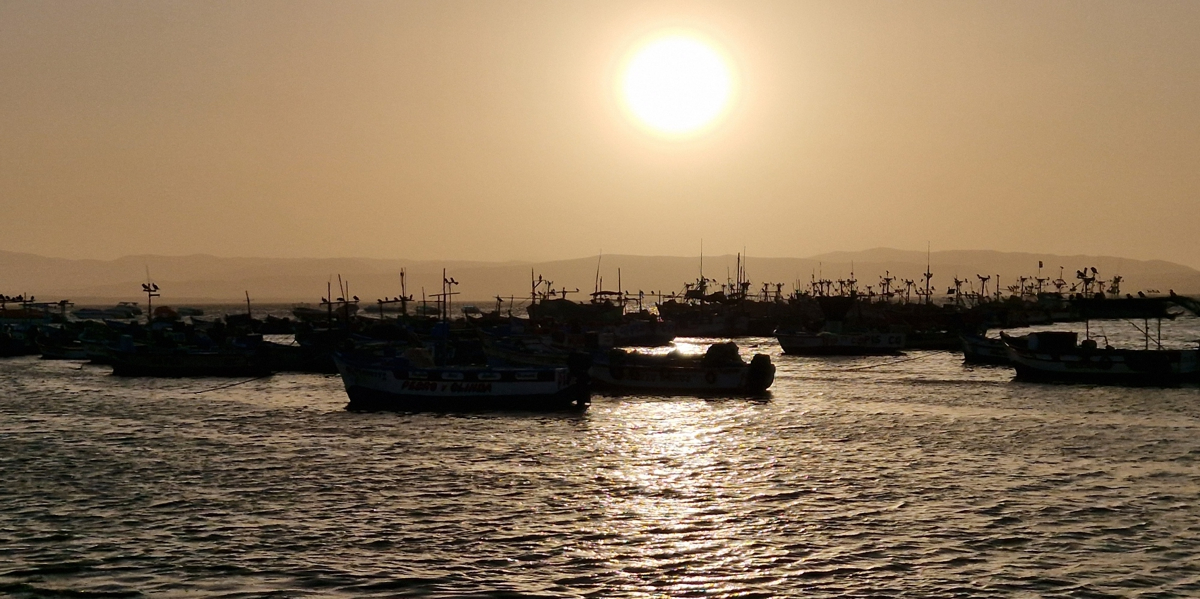
24 September: a Saturday in Lima
We use the Saturday to get an impression of city live in Lima, which hosts about 11 Million inhabitants. In the center of the city is the ancient Plaza Mayor, which dates back to before the arrival of the colonists. The cathedral is used for many a wedding on this Saturday, resulting in many very nicely dressed up people walking across the square.
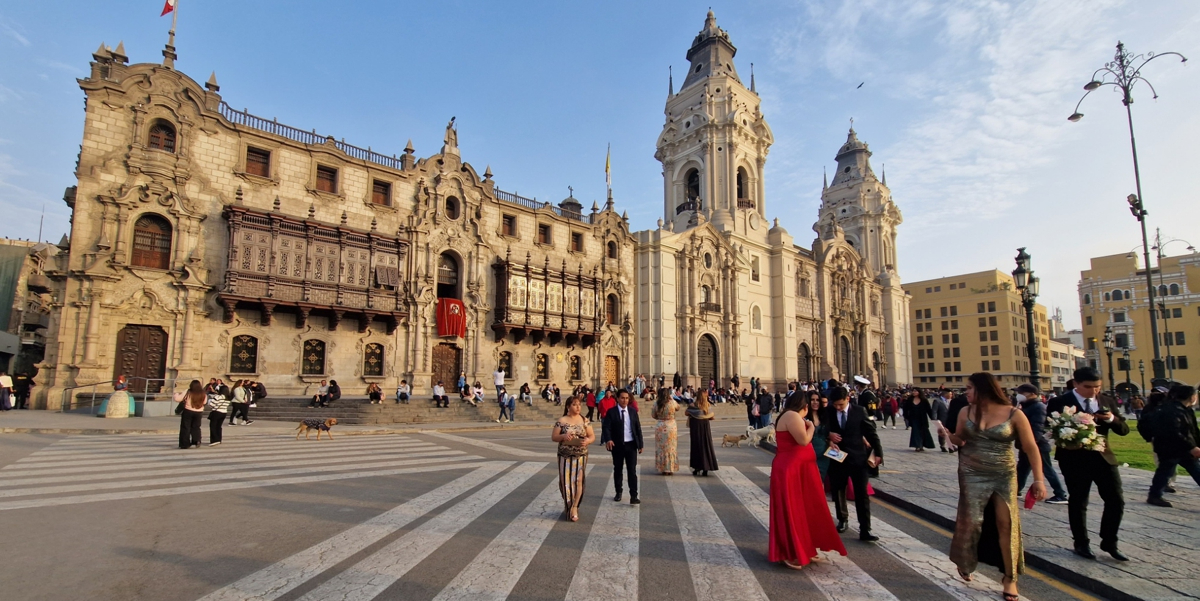
As the sun sets, it is getting more obvious that 'something' is obscuring the light; is it the fog, caused by the upwelling of cold water along the coast, leading to the relatively low air temperatures (12-14oC), the smog that is inevitable in such a large city, or dust?
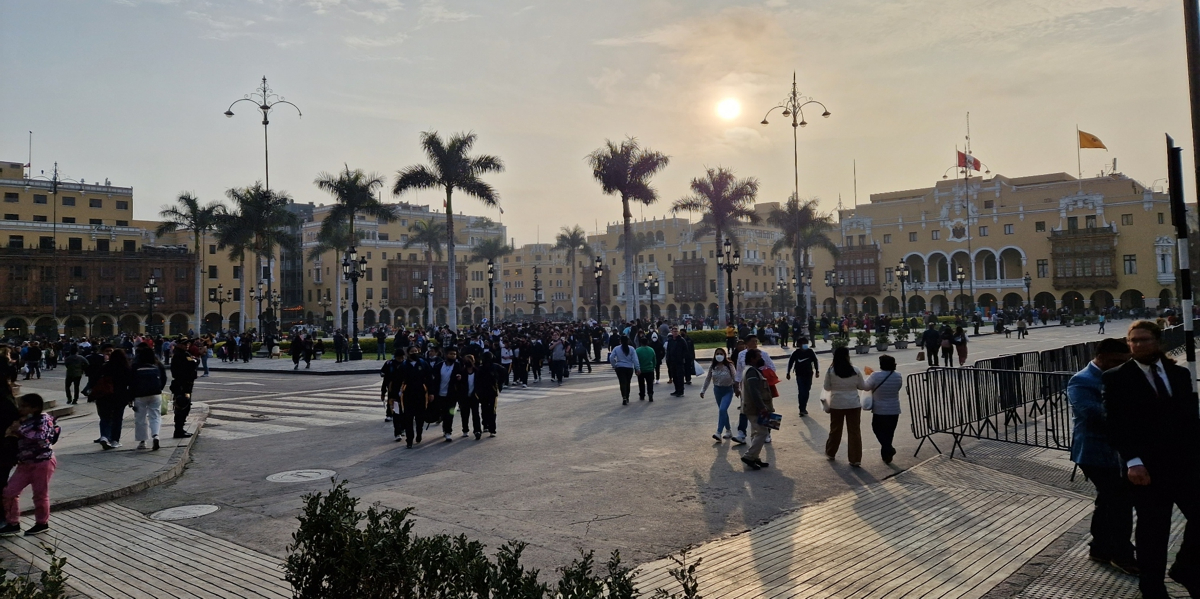
23 September: farewell session
After five days of intensive scientific exchange of results and ideas, the conference is closed with music and dance in traditional Peruvian style. The organisers, including many volunteering students are thanked for their tremendous work and we look forward to the next meeting in a few years.
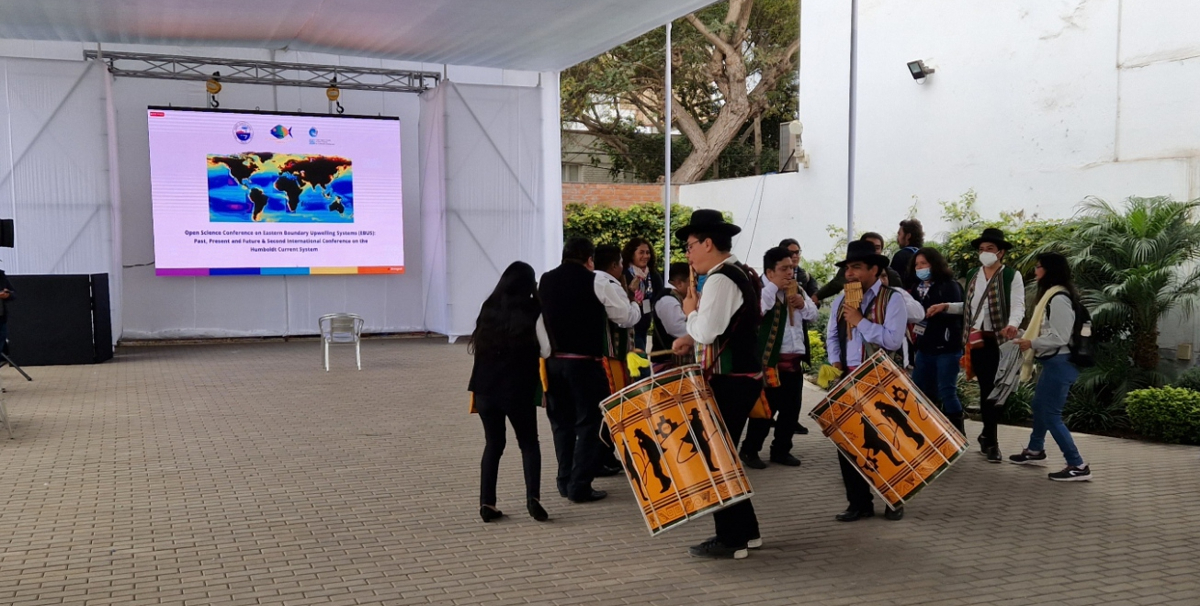
20 September: poster presentations
In large scientific meetings, there are usually só many participants that not everybody can get a time slot (usually 15 minutes) to present their work in a powerpoint presentation. Alternatively, one can also present her/his work on a poster. Advantages of such posters is that they are usually visible for a few days and that one can invite peers to come and discuss in front of it.
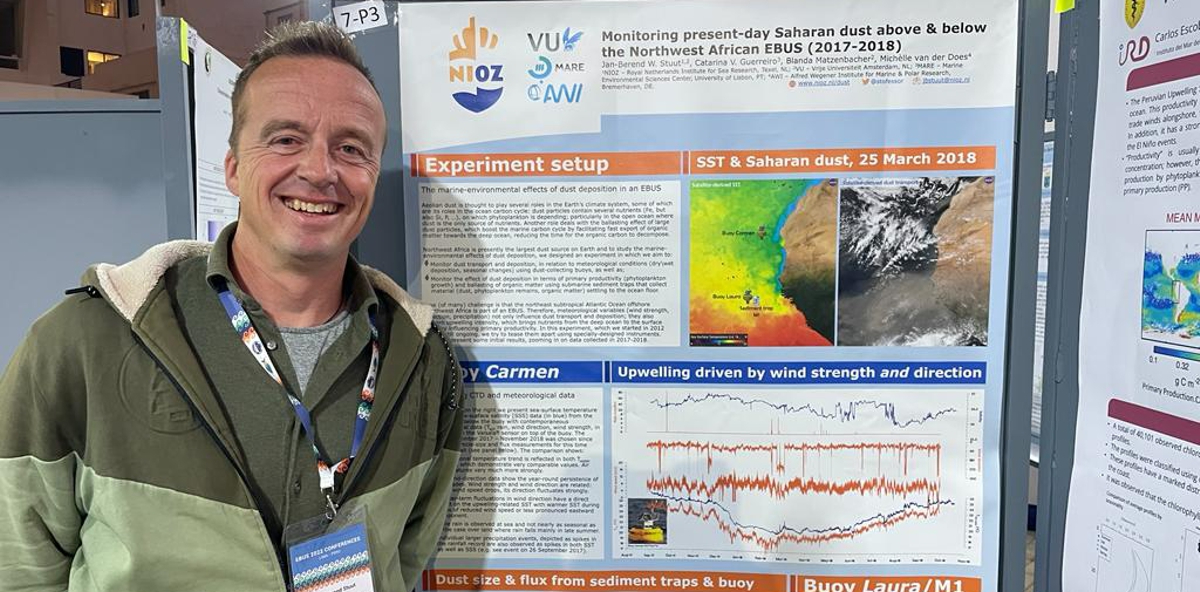
19 September: hosting our session
Directly on the first day we have part 1 of our session entitled: "Understanding the driving factors of marine productivity in EBUS". Originally, we had focussed a tick more on the role of desert dust in EBUS but the conference organisers suggested to take a bit wider view at productivity in EBUS.
The main issue that we would like to bring to the discussion is how to distinguish between productivity that is stimulated by ocean upwelling (nutrients from below) and dust (nutrients from above)?
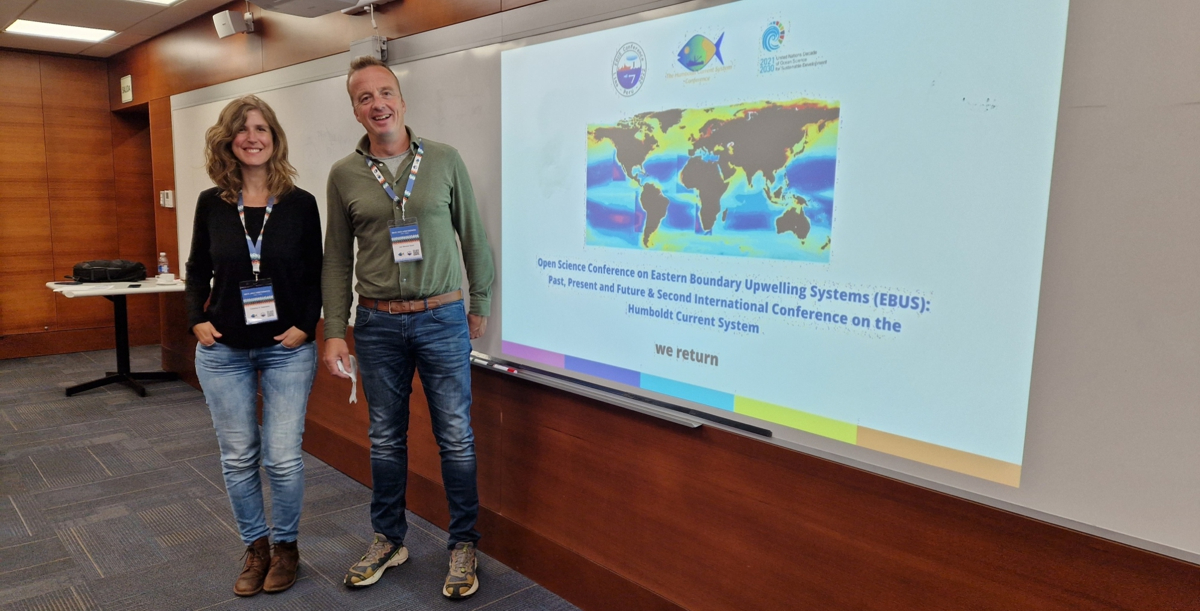
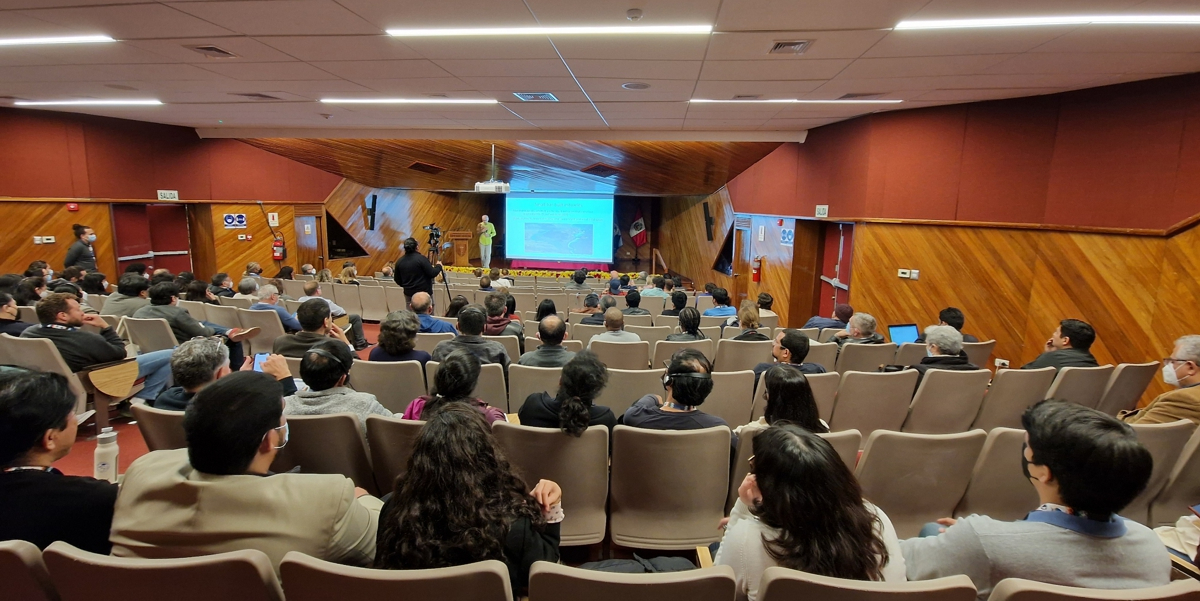
19 September: start of the conference
After months of preparations the meeting finally starts with delegates from literally all over the world who attend the meeting either 'live' or 'virtually'. As many participants do not speak English very well, there are interpreters in all rooms to directly translate Spanish presentations to English and English presentations to Spanish.
The programme of the conference was organised along three thematic axes:
- Ocean physics and associated biogeochemical processes in relation to climate variability and climate change.
- Living resources, fisheries and adaptations to environmental variability
- Socio-ecological vulnerability to climate change and extreme events
